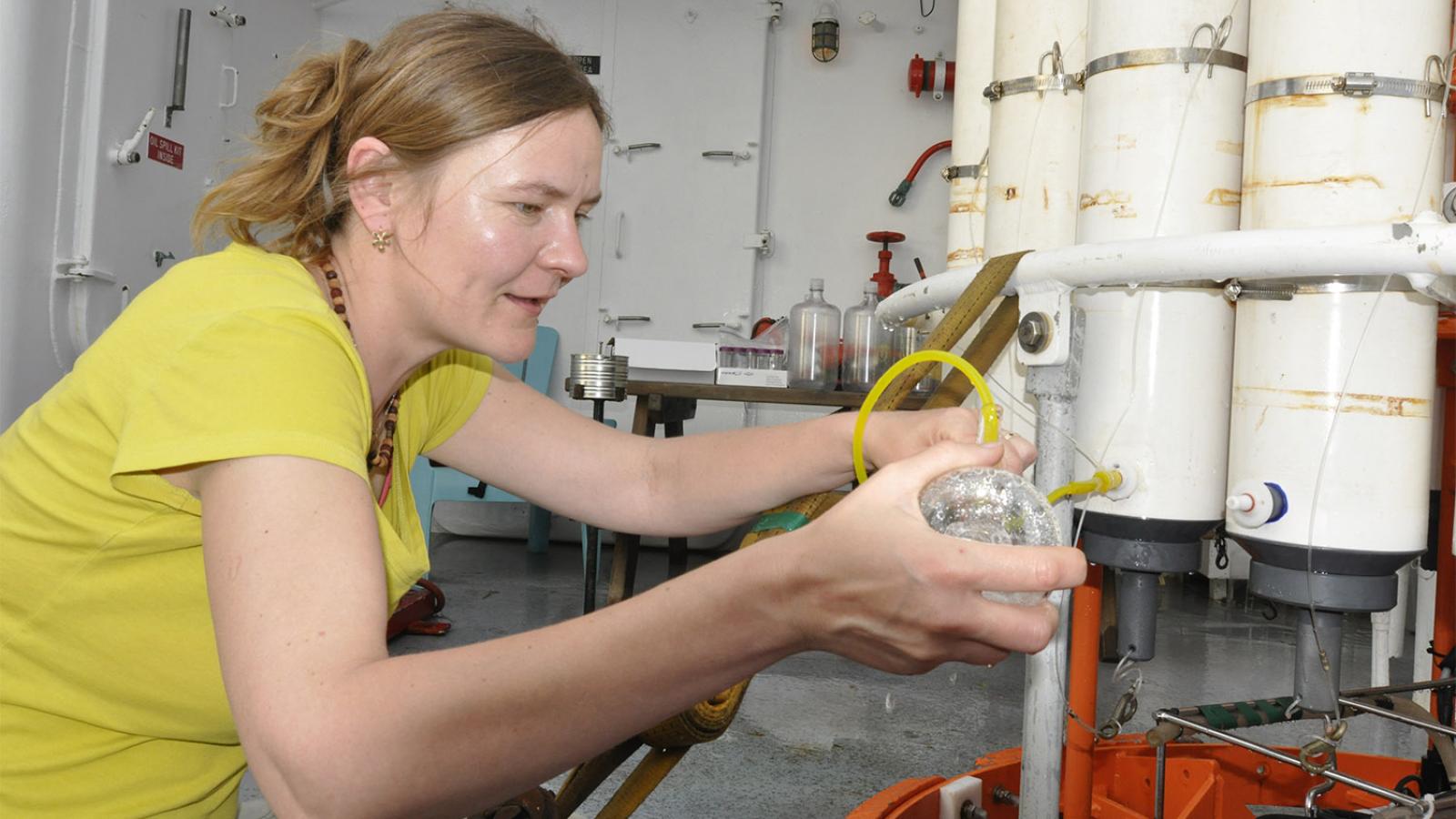Masha Prokopenko, visiting assistant professor of geology, can’t wait to get back to sea—not on a luxury cruise, but on a four-week research voyage to explore how apparent “deserts” in the North Pacific Ocean defy the odds and obtain the nutrients they need to sustain the ecosystem.
These nutrient “deserts” are found in the five remote subtropical gyres of the world’s oceans, says Prokopenko. A gyre, according to the National Ocean Service, “is a large system of rotating ocean currents.” This project will focus on the North Pacific Subtropical Gyre.
Prokopenko is a co-principal investigator of a project that in January was awarded a three-year, $1,428,019 grant from the chemical oceanography program at the National Science Foundation. Rob Letscher from the University of New Hampshire is lead principal investigator. Joining Prokopenko as co-PIs are Rene Boiteau of the University of Minnesota and Angela Knapp of Florida State University.
The funds will make it possible for the research team to take hundreds of water samples at varying depths across the Pacific from San Diego to Hawaii in the summer of 2025 to study the nitrogen cycle in the ocean. In addition, tens of thousands of measurements will be made on board the research vessel in real time using a specially designed seagoing Equilibrator Inlet Mass Spectrometer (EIMS), which Prokopenko is in charge of building. She will measure the amount of photosynthetic oxygen to determine the rates of phytoplankton growth on the ocean surface. Phytoplankton are photosynthesizing microorganisms. The researchers’ goal, says Prokopenko, “is to shed light on the composition of the nutrients that sustain life in the gyres.”
Working on a long-standing puzzle
“Vast stretches of the ocean, covering almost 60% of its surface, are ‘deserts’ where life struggles to survive due to nutrient scarcity,” the researchers explain in their grant proposal. Under those circumstances, scientists would expect to find low rates of phytoplankton growth and sparsely developed “food webs”—a term that refers to all the food chains in a particular ecosystem. But that is not what multiple observations over decades have shown. Instead, “life grows at rates similar to other regions receiving higher nutrient supplies,” the authors note. The research aims to solve this long-standing puzzle.
“A leading hypothesis is that dissolved organic nitrogen (DON) is a major source of the necessary nutrients,” says Prokopenko. Nitrogen is a major nutrient essential to the growth of phytoplankton in the subtropical gyres. “All other sources of nitrogen to the gyre ecosystems—nitrate supply and N2 fixation—are insufficient to explain the observed rates of photosynthesis,” she says.
Finding the missing nitrogen source?
For years, DON has been considered a form of nitrogen not available to phytoplankton, Prokopenko notes. And yet, new ocean models predict that the supply of DON might be the missing nitrogen source, she says. “The grant will help us determine the concentrations, origin, pathways of delivery and chemical make-up of DON as it is transported from the nutrient-rich production regions to the gyres by ocean currents and assess the role of DON as an alternative nutrient source to the gyre ecosystems.”
An important outcome of the project will be development of a new, state-of-the-art global ocean biogeochemistry computer model to be programmed using data obtained on the cruise. “The model will help scientists understand how much DON contributes to food webs in the North Pacific Subtropical Gyre and, by extension, the world’s other remote oceanic ecosystems,” says Prokopenko.
Prokopenko’s research assistant, Austin Stewart Cordova, is playing a key role in building the spectrometer. Prokopenko expects to involve four to six geology students in the research, including two on the Pacific cruise. “I am thrilled to work with Pomona College students,” she says. “Both the fieldwork and the data analysis offer amazing opportunities for involving undergrads in the studies of enigmatic ocean regions that still hold a lot of secrets to uncover.”
